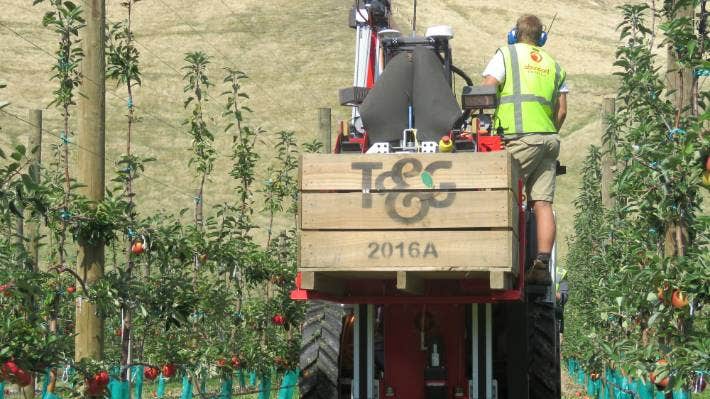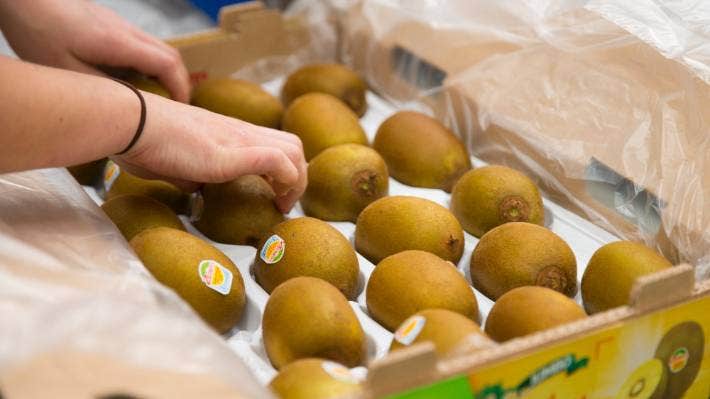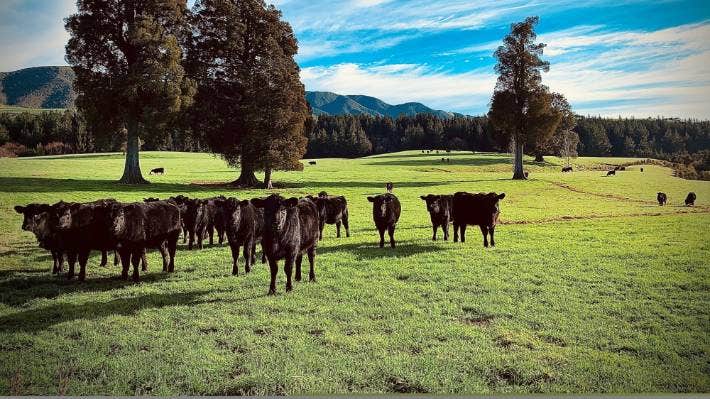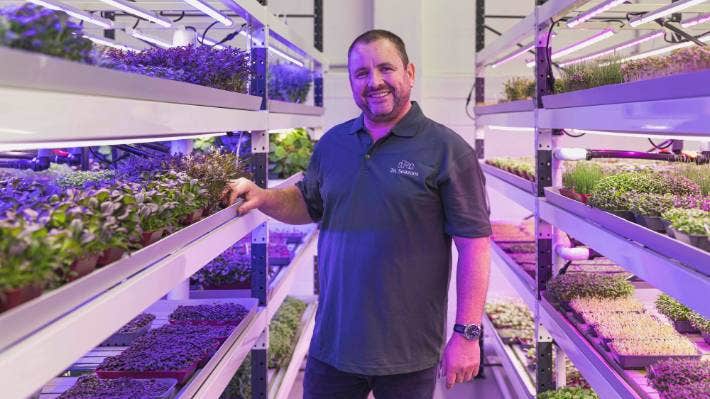This article is sourced from Stuff.co.nz
Written by Catherine Harris | Senior Business Journalist
One thing you can be certain about in the agricultural sector is that it’s always changing. Adaption is a constant for farmers, as sure as the weather.
But the challenges farming is currently facing are some of the greatest the sector’s ever had: climate change, environmental constraints, labour shortages and shipping issues.
Which raises a question: will these be the same challenges farming is facing in 10 or 20 years?
The Government has already been contemplating this question. Last June, the Ministry for Primary Industries put out “Fit for a better world,” a game plan to accelerate farming’s potential.
The plan is to add $44 billion in value to export earnings within the next decade, restore our rivers to health in a generation, and lower our methane emissions.
It also aims to see 10 per cent more New Zealanders employed in the food and fibre sector by 2030. That’s 10,000 more workers in the next four years.
These are ambitious targets, but a variety of experts consulted by Stuff agreed farming could not stand still. So what does the future look like?
TECHNOLOGY
Ask Brendan O’Connell about the future and he’ll fall back on an old adage: “The future is here, it’s just not evenly distributed”.
O’Connell who heads up the industry-led body AgritechNZ, is at the forefront of many inspiring New Zealand-based farming tech companies.
He reels off a few – remote herd management tool Halter, accelerated plant growth company BioLumic, and WayBeyond, which uses AI and big data to improve and predict the yields of hothouse crops.
These companies point to a huge rise in the precision and convenience of farming in coming years.
O’Connell says farmers have already seen a first wave of technology in terms of labour-saving devices.
“The next wave of technology, and you’re seeing it already, is the stuff that actually brings new insights, measuring things that weren’t measured before, or at a greater level of detail than before.”

Expect also more innovation geared at solving pressing issues like labour and methane.
Automation is our labour-starved orchards is already being used but it’s yet to become commonplace.
“It’s going to be a gradual adjustment,” O’Connell says.
“I don’t think you’ll see robots coming in and replacing all workers in any farming system overnight. What you’ll start seeing is more automation used to maybe take the peak of picking requirements, to flatten that out … so that humans can follow afterwards and pick up the bulk.”

There are promising signs for our greenhouse gas problem, too. The Cawthron Institute’s new algae research centre in Nelson is researching a red native seaweed which trials show could inhibit methane in stock by as much as 80 per cent when added to a feed supplement.
Darryn Keiller, WayBeyond’s chief executive, says his company only became possible with technological advances a few years ago.
Future farmers would be facing more demands around water, regulatory changes, food safety and now greenhouse gases. “So our role is to help them manage all that complexity”.
Keiller says New Zealand biotech and agriculture science is world-leading but it desperately needs more investment from the Government and venture capitalists.
“There’s just not enough funding here. Innovating in this space is expensive, especially if you want the reach to be global not just local.”

ADDING VALUE
Few people would argue with the goal of creating $44b in added export value, least of all Professor Caroline Saunders, head of Lincoln University agribusiness and economic research unit.
“Historically New Zealand farming has tended to be a culture of low cost and the truth is that nothing from New Zealand should be low cost, it should be high value.”
Saunders’ team at Lincoln has been working on a tool which shows how much sub-groups in key markets are prepared to pay.
For instance, she says, zero carbon and more sugary kiwifruit sells much better than ordinary kiwifruit in Japan, winning much higher premiums even though it results in less fruit.
“I can see a shift in New Zealand agriculture – being pushed by the market but pulled by the regulations on water and greenhouse gas emissions – towards high value products that maybe we won’t produce as much but we will get a lot more money for.”
RETURN OF THE SHEEP
It used to be said that New Zealand lived off the sheep’s back. But that was before the development of synthetics.
Wool prices are now so low that until recently, it was hardly worth the cost of the shearer.
As a result, farmers began breeding sheep for the meat market, and the national flock dwindled, from a heady 70 million in the early 80s to just 28 million in 2018.
However, wool has started to enjoy a revival.

Merino wool has found a niche in clothing, wool sneaker company Allbirds has found global success and carpet maker Bremworth has moved completely back to wool.
Last year Timaru inventor Logan Williams unveiled a sustainable alternative to plastic, blending strong wool with a polymer base.
His company Shear Edge’s first commercial order with Victory Knives was released recently and sold out within hours.
“Imagine pellets for injection moulding machines, except instead of plastic … the pallets are made of wool. That’s exactly what we’ve done.”
Federated Farmers general manager of policy Nick Clark says the productivity coming out of the sheep sector is testimony to the efficiencies it’s managed to extract.
“If you look back to 1990, that flock number has roughly halved but production is about the same as what it was then,” he says. If it can keep that up, there’s “absolutely a healthy industry there”.
TIGHTER REGULATIONS
In contrast to wool, dairy farming has been the rich cousin.
But there’s a growing feeling that dairy’s heavy pressure on the environment has tipped the industry into “peak cow”.
In the last 20 years, the average dairy herd has grown 236 to 440 cows. But in the next decade it’s estimated that dairy cattle numbers could fall 13 per cent.
Climate change is, without doubt, the most significant risk for farming, and it’s putting an urgent focus on what farmers put in the air and water.
More than 80 per cent of New Zealand’s methane emissions comes from ruminant farm animals and methane makes up nearly half of all the country’s greenhouse gases. Thus, not charging farmers for their carbon has been controversial.
The He Waka Eke Noa programme is helping farmers determine by 2025 what their carbon footprint is, in an effort to price farming emissions outside the Emissions Trading Scheme.

Faced with increasing water and fertiliser restrictions as well, some farmers are turning to regenerative farming, a method which focuses on soil health and diversity.
However, Dr Scott Larned, Niwa’s chief scientist of freshwater and estuaries, says there’s no longer enough time to prove that regenerative farming can adequately protect the environment.
And for that reason, he backs the ambition of the Government’s water reforms.
He hopes farmers will view them positively.
“I’m concerned that the science isn’t moving fast enough and the primary sector isn’t coming up with all the land use [solutions} fast enough, but I’m also optimistic.
“New Zealand is better placed than anywhere in the world to recover from pollution and freshwater degredation.
“If any place can turn it around, New Zealand can.”

Another trend farmers will continue to grapple is changing land use, and a shrinking amount of productive land.
Prime horticultural land is being lost to housing, lifestyle blocks are multiplying, and dairying’s rapid expansion in the last 12 years has converted much pastoral land.
But as dairy conversions seem set to slow, forestry is emerging as a big competitor for sheep and beef land.
The carbon price will be a clincher as to how the sheep versus forestry battle ends, Clark says.
On one hand, logs and carbon credits can be a handy income stream for farmers. On the other, many farmers fear rural communities could be hollowed out if vast swathes of land are replaced in pines.
“If they get it, right it’ll be very helpful and it could actually result in meaningful emissions reductions without having horrific economic impacts. But if they get it wrong, it could be pretty messy.”

THE CUSTOMER IS ALWAYS RIGHT
The wildcard for New Zealand’s future farming hand is what the consumer wants to eat.
And increasingly the tide is heading towards less red meat. The New Zealand meat industry’s position that world population growth isn’t slowing and there will be plenty of mouths to feed.
However, it’s up against a steady shift in consumer behaviour away from red meat, due to diet, price and environmental convictions.
As futuristic as it seems, there are companies already setting up in New Zealand to produce plant-based protein and cellular (lab-grown) meat.
But O’Connell says natural meat is by no means on the way out. “Firstly, there will always be a place for high quality food,” he says.

“Two, I think a lot of the connections people make around livestock or the food New Zealand is famous for, they … think all livestock farming is the same all round the planet.
“Yes, the planet can’t sustain the amount of livestock that we’ve got but actually, the way we farm in New Zealand is sustainable.”
All the same, he expects cellular meat to do well, firstly because it doesn’t require productive land and secondly, because it will be cheap.
“It’ll look very attractive [to people] if they put it together as a spaghetti bolognaise or chilli carne,” he says.
Some people believe New Zealand should stick to its strengths and leave meat alternatives to other countries.
But Darryn Keiller thinks New Zealand ignores exploring meat substitutes at its peril.
“My personal opinion is that that’s a flawed strategy. That might work, say, for the next five years, but if people truly do their homework and look at what’s happening in the shift of dietary behaviour in the major markets, and the ascendency of cellular and plant based proteins … it’s massive.
“If we don’t get on that train, we’re going to be left behind.”
O’Connell is less convinced but says the very good science that New Zealanders develop around food systems could be an export on its own.
“Even if we don’t produce food from New Zealand that’s of that type, we can still produce the science that will help feed the world, even if the science is implemented in other parts of the world.”